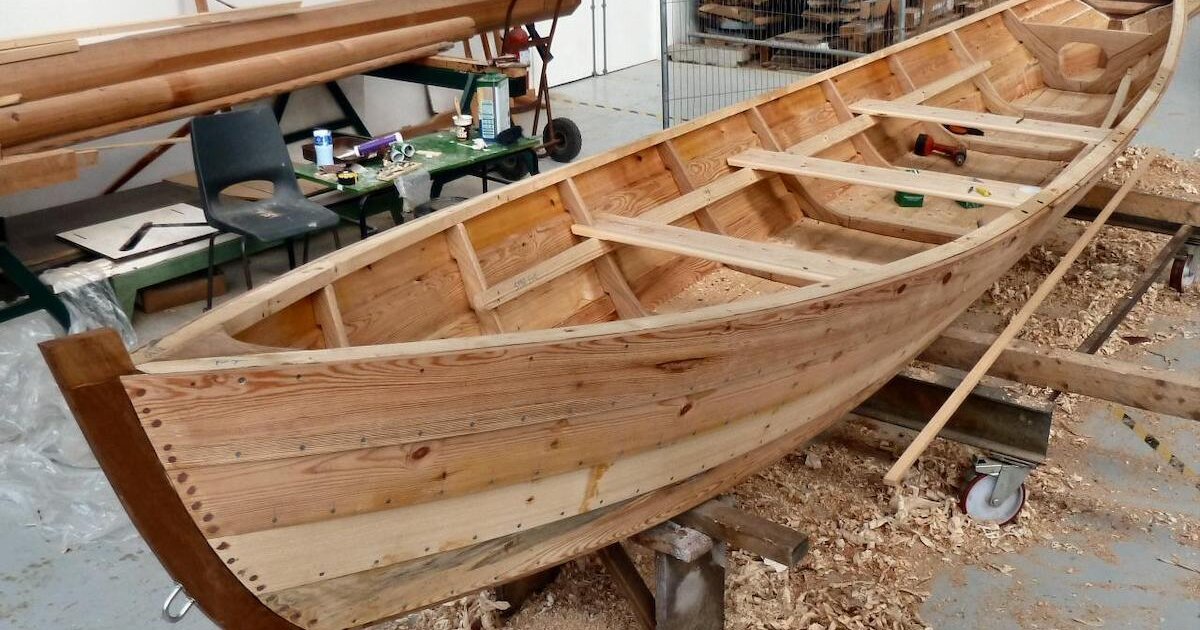
How to Build a Small Boat for Calm Waters: A Design and Construction Guide
Hey there, fellow water enthusiast! Ever dreamed of gliding across a tranquil lake or gently bobbing on a calm bay, in a boat you built yourself? Building a small boat can be a rewarding and enjoyable experience, even for those who haven't worked with wood before. This guide will walk you through the design and construction process, guiding you every step of the way to build your own little slice of aquatic heaven.
Choosing the Right Design
Before you start gathering tools and materials, it's essential to select the perfect boat design for your needs and skill level. Here are a few popular options for calm waters:
1. Rowboats:
These classic designs are simple to build and perfect for leisurely paddling. Rowboats typically feature a flat bottom, pointed bow and stern, and rowing benches.
2. Dinghies:
A bit more versatile than rowboats, dinghies can be rowed, sailed, or even motorized. Their flat bottom provides stability, while a slightly pointed bow makes them easier to maneuver.
3. Kayak:
If you're looking for a more athletic experience, building a kayak is a fantastic challenge. These sleek boats offer excellent maneuverability and are great for exploring narrow waterways.
4. Small Sailboats:
For a touch of adventure, consider building a small sailboat. These boats are designed to catch the wind and offer a unique way to experience the water.
Essential Materials and Tools
Once you've settled on a design, you'll need to gather the necessary materials and tools. Here's a basic list:
Materials:
- Marine plywood (for hull and deck): Choose a high-quality, waterproof plywood specifically designed for boat building.
- Marine epoxy resin and hardener: Provides strong, waterproof bonding for wood components.
- Fiberglass cloth or fabric: Used for reinforcement and waterproofing, especially for the hull.
- Wood filler and sealant: For filling gaps and sealing joints.
- Paint or varnish: To protect your boat's finish and give it a beautiful look.
- Hardware: This includes items like cleats, oarlocks, seats, and any other fittings your design requires.
Tools:
- Saw (circular or table saw): For cutting plywood to shape.
- Drill and drill bits: For making holes for hardware and securing components.
- Sandpaper: For smoothing surfaces and creating a smooth finish.
- Clamps: For holding components together during construction.
- Measuring tape and ruler: Essential for precise measurements.
- Safety gear: Protective goggles, gloves, and a respirator are crucial for working with wood and epoxy.
Building Your Boat Step by Step
Now, let's dive into the construction process. Remember to refer to your chosen design plans and follow the instructions carefully.
1. Cutting and Assembling the Hull:
Start by cutting the plywood panels according to your plans. Pay close attention to the angles and shapes to ensure a smooth and watertight hull. Use epoxy to glue the pieces together, clamping them securely until the glue sets.
2. Creating the Deck and Structure:
Once the hull is complete, build the deck frame and any interior supports required by your design. Use epoxy and screws to join the components.
3. Adding Stiffening and Support:
To provide additional strength and prevent flexing, reinforce your boat's structure with bulkheads, stringers, and ribs. These components are typically made of wood and are securely attached to the hull and deck.
4. Glassing and Finishing the Hull:
Apply several layers of fiberglass cloth to the hull, using epoxy resin as a bonding agent. This will create a strong and watertight exterior. Allow ample time for each layer to dry completely before adding the next.
5. Adding Hardware and Fittings:
Install cleats, oarlocks, seats, and any other hardware required for your boat's functionality. Make sure the hardware is properly secured with screws and bolts.
6. Sanding and Finishing:
Sand the entire boat surface to smooth out any imperfections. Apply primer and paint or varnish to protect the wood and give your boat a lasting finish.
Safety Tips and Best Practices
Safety should always be a priority when working with tools and materials. Here are a few crucial tips:
- Always wear safety goggles and gloves when working with wood and epoxy.
- Use a respirator when sanding and working with epoxy resin.
- Work in a well-ventilated area and avoid using open flames near epoxy.
- Follow the instructions on your epoxy and paint products carefully.
- Take breaks and stretch regularly to avoid fatigue and injury.
Launching Your New Boat
After months of hard work, it's finally time to launch your masterpiece! Choose a calm, sheltered spot for your first outing. Take your time and familiarize yourself with your boat's handling before venturing out into open water.
Beyond Building: Maintaining Your Boat
Once you've built your boat, you'll need to take care of it to ensure it stays in top condition. Here are a few maintenance tips:
- Rinse your boat with fresh water after each use to remove salt and grime.
- Inspect your boat regularly for any signs of damage or wear.
- Clean and lubricate moving parts, such as oarlocks and cleats.
- Apply a coat of varnish or paint every few years to protect the wood and maintain a beautiful finish.
Building your own boat can be a challenging yet rewarding experience. With careful planning, patience, and a dash of creativity, you can create a vessel that provides endless hours of enjoyment on the water. So, gather your tools, embrace the journey, and get ready to create your own floating dream!


0 komentar:
Posting Komentar